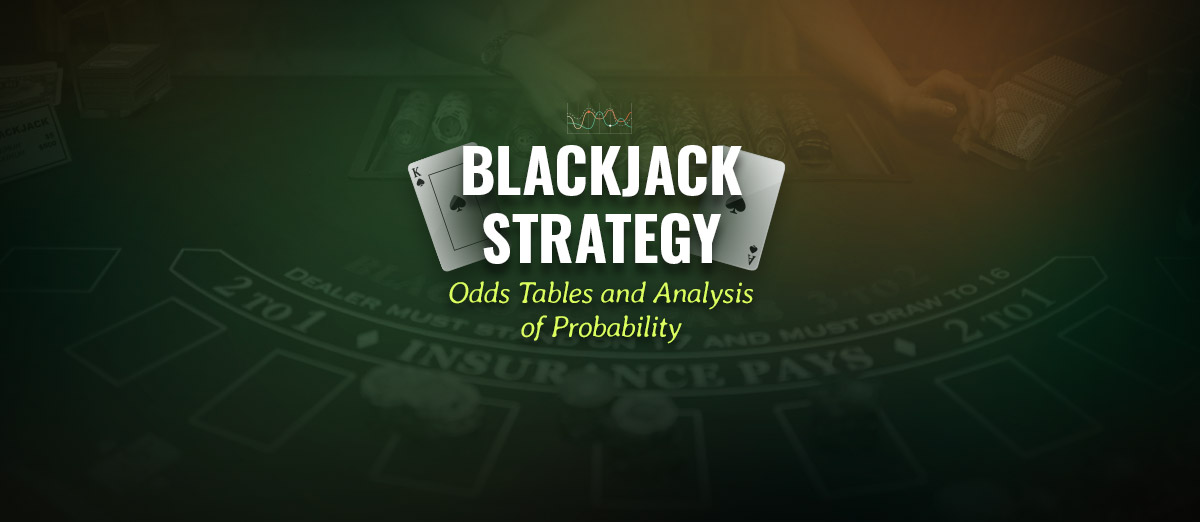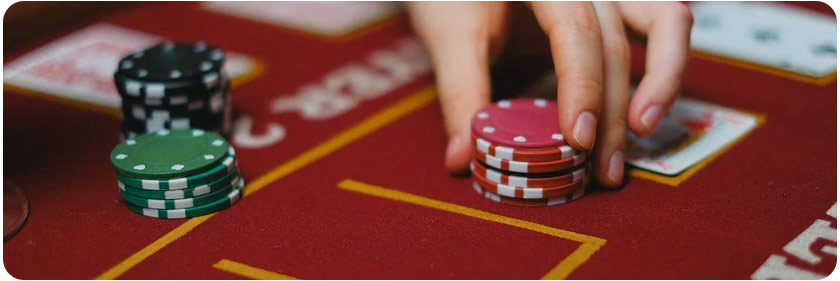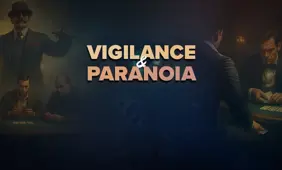Simplifying Blackjack Strategy - The Odds-Based Play of Tricky Hands

Blackjack has a double reputation among casino games. It is known as the game with the lowest house edge, and no other game has been given such attention in the academic realm. Blackjack is a game allowing what game theorists call 'optimal strategies' to be devised and applied.
However, even though such optimal strategy materials are edited in a ready-to-use form, it is not in everybody's hands to apply them during the game, even those simplified. Memorization is a required skill itself prior to application, and such charts consist of tables with over 300 entries in their simplest forms. If we talk about optimal strategies based on card counting, like the high/low count, things get more complicated in regards to application, as new skills are required.
Yet players have an alternative for their strategic play, which requires less skill – it is about using the blackjack odds tables to identify hands and configurations and categories of situations for which the odds indicate an advantage or disadvantage imposing a certain action.

How the Odds for the Blackjack Strategy Are Computed
From the mathematicians' perspective, blackjack odds and probabilities are the most difficult to work out and compute in casino games. In card games, combinatorial calculus is used for obtaining the probabilities of the events expressed as combinations of cards. In blackjack, this principle also applies. However, blackjack events are expressed as totals of values, which have to be partitioned and unfolded in card combinations before any computation is possible.
And as if that wasn't enough, blackjack came over time to be played with stacks instead of complete decks of cards. The introduction of these shuffling and dealing methods was, of course, to prevent blackjack odds calculations, shuffle tracking, and card counting since the values are not evenly distributed in the stack.
And yet, probabilities are essential when devising a blackjack strategy. How mathematicians came to surmount these difficulties? The great idea by which they succeeded in the 1950s with probability computations toward optimal blackjack strategies was to assign the probability 1/13 for the individual values 2 through 9 and Ace and 4/13 for the cards worth 10 points, regardless of the cards already dealt.
Although this assumption would be consistent only with an imaginary deck of infinite size, it worked for the specific methods and techniques that mathematicians used to obtain the long-shot blackjack odds and to build optimal strategies based on them (recursive applications, iterative computations, and Markov chains). And the results are applicable to all types of shuffling and dealing conditions in blackjack, including a number of decks.
Blackjack Odds Tables
The first initial probability is for the dealer's total before any card is dealt:
Table 1. Apriori odds for the dealer's outcome.
You may see that the odds for the dealer to achieve 17, 18, or 19 points are not much different; the odds for them to achieve 20 points are the highest, while the odds to bust are about 28%. In frequent terms, the dealer will bust on average once every 3.5 games.
For the dealer, the odds are more relevant as conditional on their first card:
Table 2. Odds for the dealer's outcome are conditioned on their first card.
The odds in table 2 are associated with the moment right before any card is dealt to the player.
A first observation is that the dealer has the greatest chance to bust for their first card, 2 through 6, and the lowest for 7 through Ace. For the dealer's first card, 5 or 6, the odds to bust are the highest (about 41-42%). But there are more observations to be made.
Based on the dealer's odds above, one may compute the player's odds of winning if they stay with a certain total:
Table 3. Winning odds for the player if they do not draw is conditioned on the dealer's first card.
Below are approximations for the player's odds to bust with the next card drawn, regardless of the dealer's first card:
Table 4. Odds for the player to bust with one card drawn.
Odds and Optimal Blackjack Strategy
Blackjack odds are important information that may reflect a relative advantage for the player or the dealer in certain situations. However, they do not comprise the complete picture of what an optimal strategy means in blackjack. The payout rates come into the equation along with probabilities when computing the house edge of blackjack. Depending on the version of the game, the rules in force, and the strategy a player uses, the house edge of blackjack could be anywhere between 0.1% and 2.7%.
When they say that blackjack offers the best odds for the player among the casino games, "odds" actually refer to the house edge. Indeed, strategic play influences the house edge, and this is a direct implication of the definition of the house edge. The optimal blackjack strategies with a certain scheme of rules give the lowest house edge.
But how the optimal strategies were conceived, and how do they work? Their driving principle is the minimization of loss and maximization of the profit over the long run, and they are based on the comparison of mathematical expectations. The expression of a mathematical expectation involves both probabilities and payout rates: EV = (probability of winning) × (payoff if you win) + (probability of losing) × (loss if you lose), where the loss is a negative number.
For every configuration of the game, by comparing the expectations for the player associated with each possible action (stand, hit, double down, split, surrender), the highest expectation indicates the optimal action in the case. Therefore, odds alone cannot account for such a blackjack strategy, but expectations are computable by using the probabilities and the payout rates.
Mathematicians came first with what is called the fixed optimal strategy in 1956. This blackjack strategy does not change with the new cards dealt. The mathematical work on blackjack peaked in 1962 with Edward Thorp, who devised the High-Low count optimal strategy.
Since then, several versions of the blackjack strategy based on card counting have been developed and disseminated for the players. They use different algorithms for counting, but they are grounded on the same principle of comparison of expectations. There are also blackjack strategies applicable to other games, too.
Whatever the optimal strategy in question, its application consists of the memorization of the strategy tables and their right use during the game. These tables reflect the mathematical optimization of the hit/stand/double, the split, double down, and surrender, applicable for all possible situations of the game with respect to the hand total and the dealer's first card. But even the basic tables based on fixed strategy assume so many entries that it's very difficult to memorize them and apply them during the game. It is difficult even for visual learners.
One relatively easy-to-learn table is that of optimizing splitting, but the hit/stand tables have 200 entries altogether in their basic form. Of course, tables and charts reflecting the card-counting optimal strategy are far more complex and hold a higher load of data.
Table 5. Splitting optimization per the fixed optimal strategy (S indicates that splitting is advantageous, while (S) indicates that splitting is advantageous only if the next card is permitted to be doubled.)
The question arises of how less-skilled players may benefit from blackjack math in their play if they are not able to use the optimal-strategy tables. The answer is in the odds tables above. Odds alone can indicate advantageous or disadvantageous hands or a category of hands that may be played in order to maximize profit and minimize loss over the long run.
Tricky Hands and How to Play Them Based on the Odds
It's time to go back to the table odds and take a careful look into their data. If we look over each row, we can see that the values do not increase or decrease monotonically – there are increases/decreases followed by a sudden decrease/increase, peaks, or hills. The basic reason for that is that the number of card combinations that a certain total of values is unfolded into does not increase linearly with that total, and the probability reflects that number of combinations. These breakings of linearity can give us some tips for evaluating hands that are disadvantageous or advantageous just in terms of odds.
Take, for instance, Table 2 for the dealer's odds: On row 17, we can see that the dealer's odds of reaching 17 points are maximal when their first card is 7, about 37%. If adding up the odds for 18 through 21 points, the dealer's odds go up to about 77%. This information tells us that against dealer's 7, we should take the risk to hit when we have a total under 17. Similarly, on row 18, the dealer's peak is for their first card being 8 (about 36%), then on row 19 for their first card being 9 (about 35%), and on row 20 for their first card of 10 points (about 34%). These observations turn into the following recommendation:
For the dealer's first card, 7, 8, 9, or 10 (points), it is recommended to hit a total under 17. Exceptions are given by the optimal-strategy table 5 for splitting: Split a pair of 8s except when the dealer's first card is 10; split a pair of 7s if the dealer's first card is 7; split a pair of 3s or 2s if the dealer's first card is 7.
The player's odds of winning when staying (in table 3) also exhibit breakings in monotonicity. Let's take a look at it with an eye on the dealer's odds in table 2.
For instance, the highest probability for the player to win if not drawing at less than 17 points is attained for the dealer's first card 5 or 6 (41.62 – 42.32%), for which the dealer has the highest probability to bust. In table 4, the odds for the player to bust with the next card are higher (0.56 – 0.69) for a total between 14 and 17 than for a total between 12 and 13 (0.31 – 0.39). The recommendation follows: At 12 or 13 points against the dealer's 5 or 6, it is recommended to stay or split if you have a pair of 6s.
Odds tables can also help when dealing with "bad" hands. One such hand is recognized as the hard 16. It is bad because the total of 16 is just below 17, and the probability for you to bust with the next card is high (62%). One option in that situation would be for you to surrender (if allowed) to minimize the possible loss. However, table no. 3 shows the highest odds of winning with that hand for the dealer's first card, 4, 5, or 6, for which the dealer's odds of busting are between 39 and 43%.
If you have a hard 16 against the dealer's 5 or 6, it is recommended to stay. If you have a pair of 8s, split them, except against the dealer's first card being Ace or 10.
We can derive more such recommendations just by analyzing how the numerical values behave in the odds tables. Let's make one more observation:
Look at row 18 in table 2, and you will see the odds increasing for the dealer's first card 2 through 7, to a maximum of 63% for 7, then dropping suddenly to about 37% for the dealer's first card 8 and going down to a minimum for Ace. This indicates that the popular recommendation to stay at 18, regardless of the dealer's first card, is not straightforward. One ace as the dealer's first card reduces your chances of getting one if hitting. Then, at 18 points, you may take the (high) risk of hitting against the dealer's first card, 10 and stay for the other cards.
You should be aware that such recommendations based on the analysis of odds only do not have the coverage of those based on optimal-strategy tables or charts. For instance, doubling down is not considered in the former case. Yet they are an objective compromise for the players having difficulty in memorizing and applying the strategic tables based on expectations.
Whatever the source used for blackjack strategy, either the recommendations based on odds only or those coming from the optimal strategy could have an effect in the long run.
References:
Bărboianu, C. (2022). Understanding Your Game: A Mathematician's Advice for Rational and Safe Gambling. PhilScience Press.
Bewersdorff, J. (2021). Luck, Logic, and White Lies: The Mathematics of Games, second edition. CRC Press.
Thorp E. (1962/1966). Beat the Dealer. Vintage.





Review this Blog
Leave a Comment
User Comments
comments for Simplifying Blackjack Strategy - The Odds-Based Play of Tricky Hands